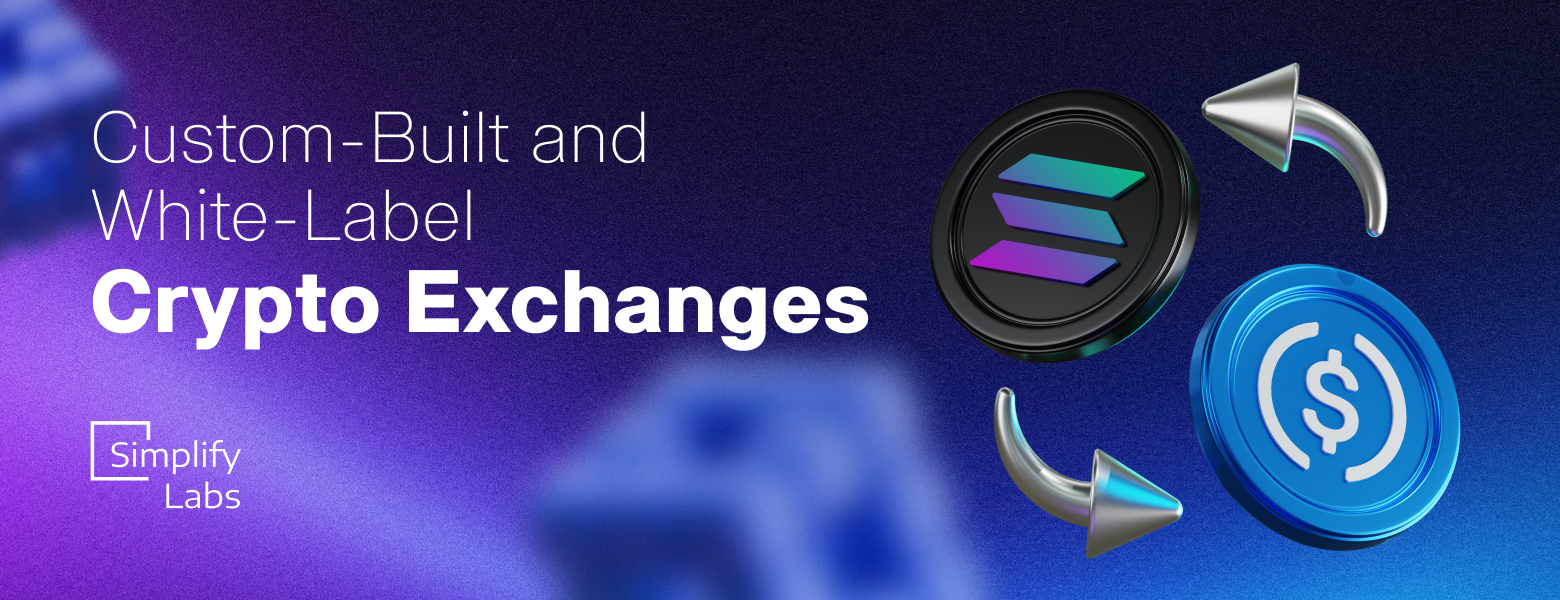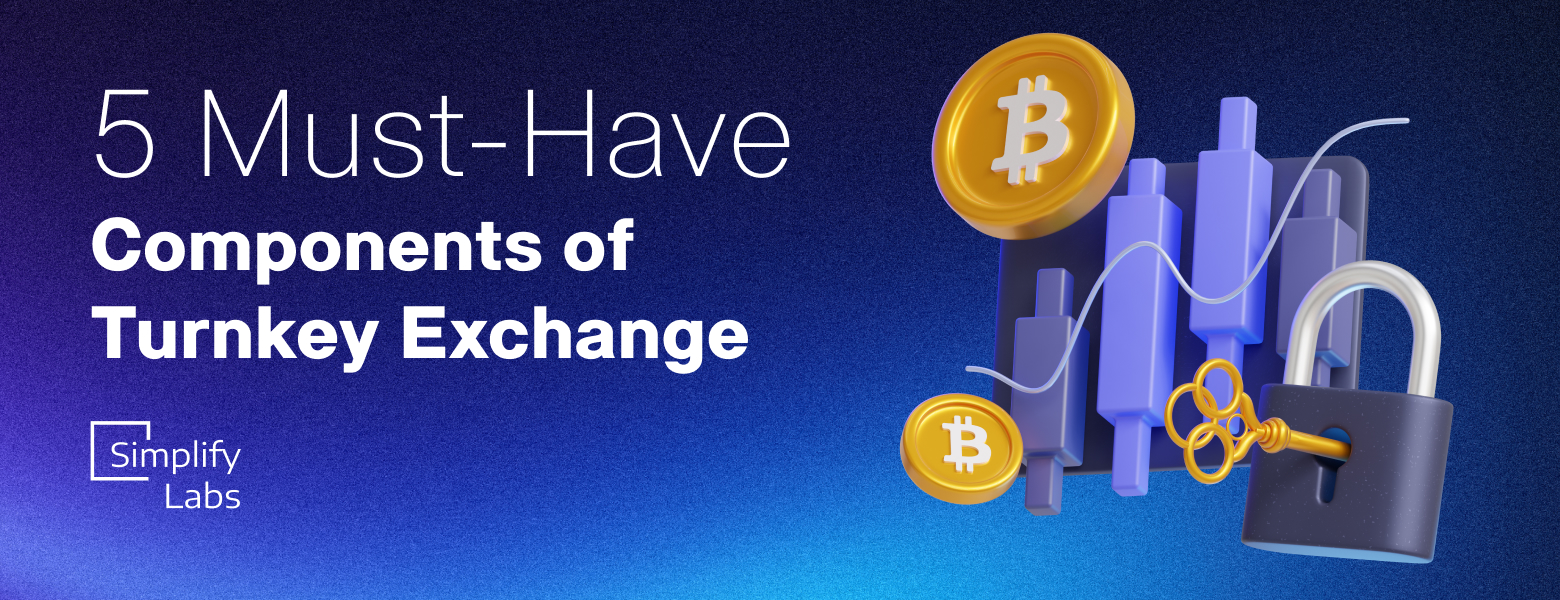With how quickly the crypto market is expanding and evolving, launching your own exchange platform easily beats whatever trading strategy you have for profit. But it’s not a simple process; having and running a successful exchange platform depends on many things. This guide has been designed to show you these things.
Short Summary
- Choosing a suitable blockchain platform for your exchange requires you to know the market demand and competition.
- Things like regulatory compliance and a user-friendly interface go a long way in helping to attract users and create revenue streams. So do assembling a development and using solid market strategies to build community loyalty.
Understanding the Basics of Cryptocurrency Exchanges
Crypto exchange platforms are like branches for crypto-fruits to grow. With how they let investors diversify crypto holdings and crypto developers gain traction for virtual currencies, this is how important they are to the crypto industry. This is the first thing to note. The second relates to how they operate.
Centralized vs. Decentralized Exchanges
Crypto exchange platforms generally operate as centralized and decentralized exchanges. Centralized exchanges (CEX) are run by a third party and usually have high trading fees. But they also have high liquidity and many trading pairs.
By comparison, most decentralized exchanges (DEX) don’t have comparable liquidity or trading pairs. Instead, they are all about direct peer-to-peer trading; the costs are mainly in the form of gas fees. But they have a soft spot for privacy, security, and transparency, which is where they beat CEX platforms.
Trading Pairs and Liquidity
The idea of trading pairs is that of trading two cryptos together so that investors can use their correlating price movements to make profits. Liquidity is an outcome of these price movements, which might be high when there is sufficient market activity and low when there isn’t. Liquidity is a good thing, and having more trading pairs on your exchange can boost it.
Assessing Market Demand and Competition
Crypto exchanges are growing to be more precious as users want new things to invest in. Great prospects for profit await, but this will require you studying the current trends, your competition, and the market’s growth potential.Competitors to look out for include Coinbase, Binance, Kraken, SimplifyLabs and Bitstamp. Each has its selling points.
Choosing the Right Blockchain Platform
Different blockchain platforms offer different advantages. For example, Ethereum’s selling points are its many different programming languages, ERC-20 standard, and the capacity to process a huge number of transactions. Binance Smart Chain is all about low transaction fees and scalability, which helps it also manage huge volumes of transactions. EOS offers scalability plus being able to process lots of transactions per second plus zero transaction fees.
Legal and Regulatory Considerations
A successful crypto exchange launch takes into account things like location (where it should be based), what regional requirements it needs to comply with, and how to approach anti-money laundering (AML) and Know Your Customer (KYC) regulations.
This is why having a legal advisor can fix all those cobwebs for you, even if you want to establish your exchange in a crypto-friendly nation. The Simple White Label is a good option to consider. In addition to the legal and regulatory expertise you get, it also supplies tangible digital tools to help you start your crypto exchange successfully.
Building a Secure and User-friendly Platform
Security Measures
Solid security measures are what make good exchange platforms. These measures can be anything from two-factor authentication (2FA), encryption, or even periodic audits. These particular measures are great for guaranteeing to crypto users at large that your platform is reliable and secure.
User Experience and Interface Design
A good user-friendly interface is next to seamlessness. So important is this that it is a dividing line between CEX (more user-friendly) and DEX (less user-friendly) platforms. The more you make your exchange easy for users to navigate, the higher the odds that more users will emerge out of nowhere to use it.
This is what you want. It is also why you need to design a straightforward interface, with how-to-use instructions and tutorials. Having customer support nearby will also draw users over. And should you decide to use a turnkey platform to design your exchange, White Label from SimplifyLabs gives you just the right amount of flexibility to craft a perfect user interface matching your own branding and ethos.
Developing Revenue Streams
When generating revenue for your exchange platform, different methods, like trading fees and listing fees and premium services, lead to different outcomes. CEX platforms generally use these strategies. DEX platforms are more innovative and use things like staking, advertisements, Initial Fee Offering, swap fees, and many others.
The options are never-ending. You can even use affiliate programs and margin trading, and/or add extra services to your exchange.
Assembling a Skilled Development Team
The higher the skill of your development team, the greater your chances at successfully crafting, maintaining, and frequently improving your exchange. Eastern Europe, particularly Ukraine, is known for being a farm for top specialists—companies with convincingly super expertise and long stretches of successful projects. You can also consider using a top ready-to-use solution and skip the development phase entirely.
Marketing and Community Building
Social Media and Content Marketing
Social media marketing and content marketing are reigning methods to help raise awareness about your exchange. Used effectively, they can create more engaging content than you think possible, and even monitor how customer interactions with your platform can be deployed to get more users.
Building a Loyal User Community
A strong community is about the best gifts that can be handed to a crypto exchange. Build them right and they will work for you, few questions asked. Strategies for community building include offering customer support and keeping up with users on social media and hosting events like meetups, hackathons, and conferences.
Evaluating White Label Exchange Solutions
With white label exchange software, you don’t need to spend too much time or money. The white label solution is pre-built and can be adjusted to your specific outlay. If you partner with an authentic white label company, you can save considerate costs. Not to mention, you will also be able to customize the interface however you want and decide the backend core functionality.
Continuous Improvement and Adaptation
Whatever competitive edge your exchange can bring out would come from continuously improving and adapting to changing market conditions. This is important. The more people find out about crypto, the higher your odds at hitting it big. Keeping an eye out for these changes thus put you in an advantageous position from the start.
Summary
Starting a crypto exchange is complex but satisfyingly rewarding. But this means you first need to understand the basics of crypto exchanges, assess market demand and competition, and choose the most suitable blockchain platform to launch on. Adding in a skilled development team and user-friendly interface, plus a readiness to comply with existing market regulations, you are good to go.
Frequently Asked Questions
Can I create my own crypto exchange?
Creating your own crypto exchange is possible. But you need a lot to start successfully, including financial and technical resources. So, before starting, make sure to think around how to have sufficient funds to cover initial costs.
What do I need to know before starting crypto trading?
Before starting crypto trading, know what makes one crypto different from another. Find out about what makes them tick, fluctuate in prices, and so on.
How do I run a good crypto exchange?
To run a successful crypto exchange, have a solid team at hand and comply with market regulations. Also, build good relationships with banks and a payment processor. Then create a platform using software or a white label solution and put in the best security measures. You will also need legal expertise and funding, not to mention an experienced technology solution provider. Only then can you connect to other exchanges for liquidity and test your exchange before going live.
How do you make a decentralized exchange?
First, define your business goals. Then choose the most suitable blockchain network to launch on. Next, create smart contracts with a good user interface. Then test, deploy, and integrate the contracts with a Web3 Provider. For extra kicks, add in advanced features.
It’s a bit intimidating, but not if the right guidance and resources come in. With a clear idea of how your chosen blockchain network fits into your business plan, you are already off to a great start.
What are the main differences between centralized and decentralized exchanges?
Centralized exchanges (CEX) have a third party running the show and charge high trading fees. But they also have high liquidity and many trading pairs, which are pluses. Decentralized exchanges (DEX) generally don’t have these, but allow direct peer-to-peer trading. Trading costs are almost zero and the platforms are more private, secure, and transparent.






